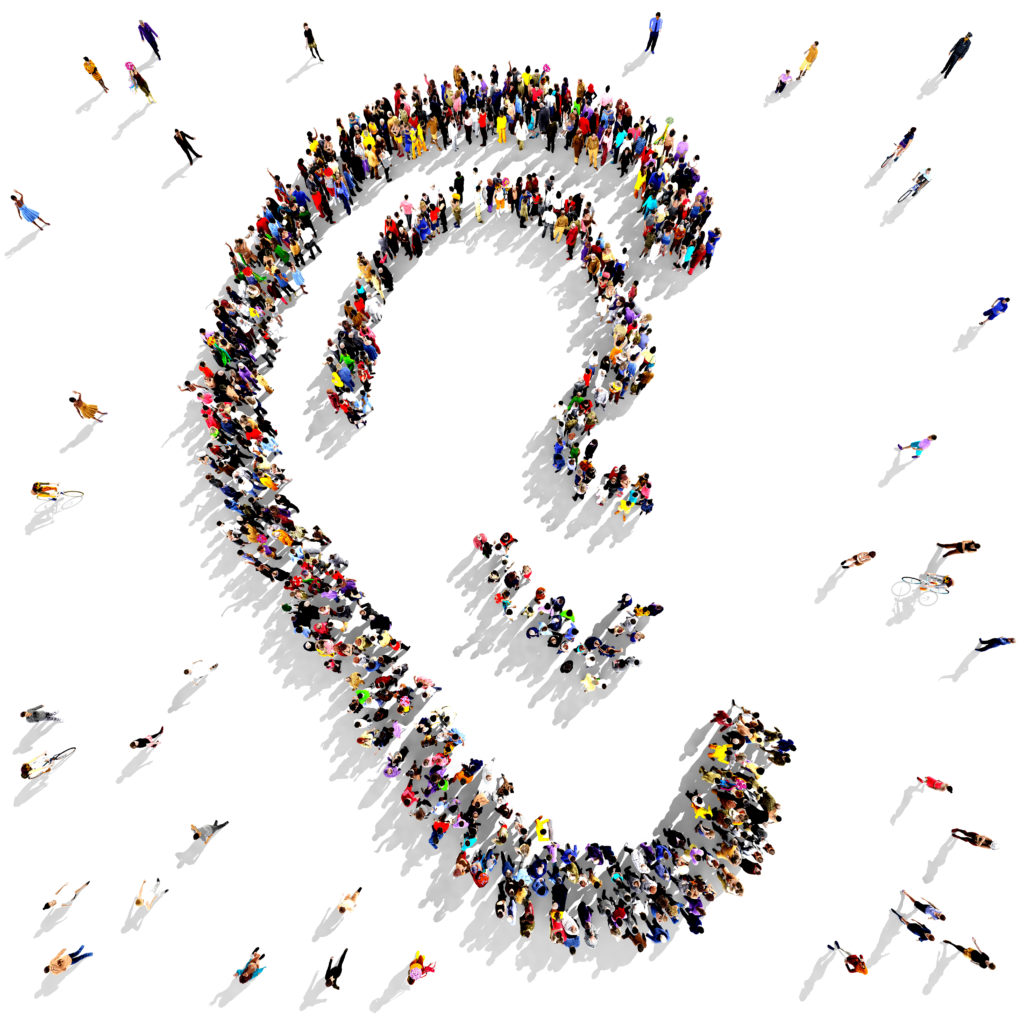
It’s difficult to pinpoint when the current Audio Renaissance began, but seemingly everyone believes it’s for real.
Some think it started with podcasting around 2004, but that medium wallowed for many years before becoming the darling it is today. It wasn’t until Serial captured the media zeitgeist in 2014 that masses of people started buzzing about – and actually started listening to – podcasts.
The advent of “voice” might be another key point in audio’s ascent. Siri was introduced in the iPhone 4S in 2011, but most people still worked their fingers and the apps of their smartphones. “Voice” came into its own, starting again in 2014 – the year the Amazon Echo featuring “Alexa” hit the market.
Paul and I couldn’t help but notice that audio became more omnipresent at CES in 2017. Alexa and Google Assistant started making their appearance in a wide array of gadgets, from TVs to refrigerators to workout equipment. And everywhere we looked around the Las Vegas Convention Center, we saw “audio” in lots of places.
appearance in a wide array of gadgets, from TVs to refrigerators to workout equipment. And everywhere we looked around the Las Vegas Convention Center, we saw “audio” in lots of places.
In 2018, iHeartMedia purchased the How Stuff Works podcasting platform. And that next year, its CEO, Bob Pittman, was interviewed by NBC News’ Claire Atkinson.
Bob extolled the virtues of radio, of course, but also addressed the broader audio platform, including smart speakers, the Stuff Works acquisition, as well as streaming audio.
His money quote?
“Audio is hot for the first time in decades.”
And soon after, many “radio” companies quietly started modifying their brand names. The words “media” and “audio” started to show up.
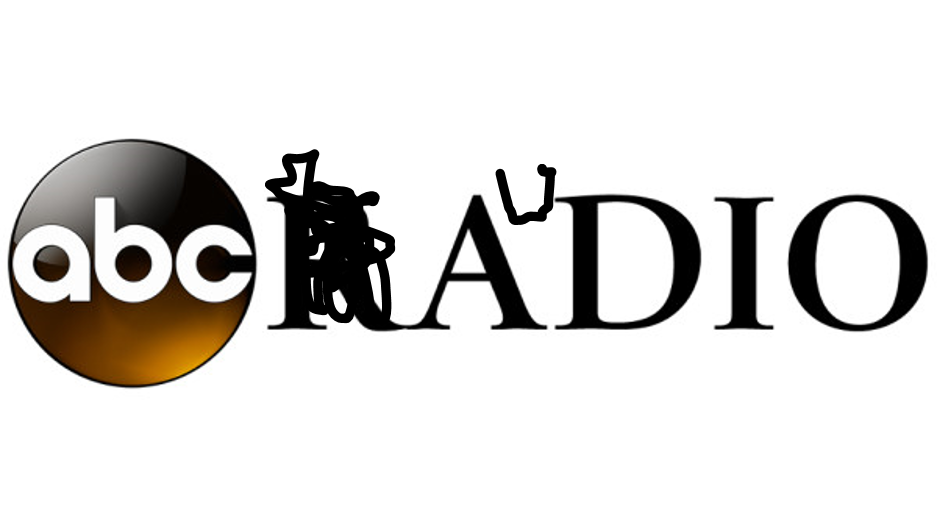 One of the more bombastic name changes involved my alma mater, ABC Radio. In 2019, they dropped the “R-word,” becoming ABC Audio.
One of the more bombastic name changes involved my alma mater, ABC Radio. In 2019, they dropped the “R-word,” becoming ABC Audio.
And then last week, Entercom dramatically renamed the company Audacy, while also dropping its much promoted Radio.com streaming platform in favor of the new corporate moniker. It was a statement move.
Just when you thought the audio moment couldn’t pick up steam, the beta launch of Clubhouse late last year proved to be nothing short of momentous. It has generated a steady hum around social spoken word – or for short, social audio.
Former Jacobs Media social whiz, Lori Lewis, took a test drive of Clubhouse on this blog back in January.
And that’s just the beginning of what appears to be a bona fide trend in 2021.
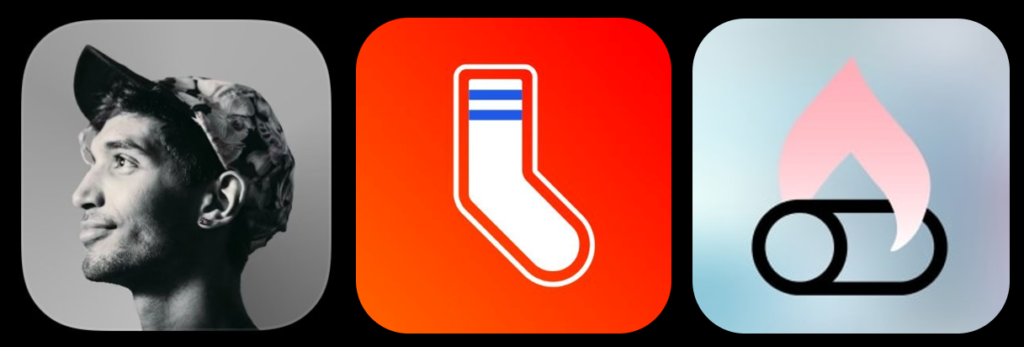 Spotify has acquired Locker Room, which they are modestly referring to as “the future of audio.” And other variants are springing up, including Mark Cuban’s new creation, Fireside Chat.
Spotify has acquired Locker Room, which they are modestly referring to as “the future of audio.” And other variants are springing up, including Mark Cuban’s new creation, Fireside Chat.
Meantime, Twitter, Facebook, and LinkedIn are scrambling to respond with social audio platforms of their own. Several are “by invitation only,” giving this trend the feel of a social nightclub with a virtual bouncer in front of the entryway. Not everyone is admitted, and not every talk topic is worthy.
It is truly amazing what has happened in this space in less than six months.
Not surprisingly, broadcast radio execs are having conversations about how they might best utilize these social audio tools. And their overriding assumption – as always – is that when it comes to audio, no one knows the ropes better than radio pros. After all, we’ve been the kings of audio since Marconi, Tesla, Casey Kasem, and Wolfman Jack.
But if that were true, broadcasters would be partying in the audio penthouse right now, celebrating the spoils of these new platforms – like podcasting. But sadly, on-demand radio has not come easily to most radio companies. Take my word for it. Our “Broadcasters Meet Podcasters” sessions at Podcast Movement the last few years have been well attended, but radio hasn’t produced the landmark podcast milestones everyone hoped for.
Instead, the biggest radio broadcasters – iHeart and the former Entercom – have had to buy their way into the podcasting market or be forced to step aside and cede the space to more innovative content creators. (To its credit, Cadence13 says it will create 22 original podcasts this year, so at least some of its content will be homegrown.)
NPR is the only U.S. broadcast radio entity that has elected to “build it” rather than “buy it.” And what a success they’ve been. But now, even the public radio overlords find themselves mired in an increasingly competitive landscape. Podcasting is becoming difficult to dominate because there are so many big money players trying to own the hill, while the marketplace is glutted with more and more content.
landscape. Podcasting is becoming difficult to dominate because there are so many big money players trying to own the hill, while the marketplace is glutted with more and more content.
And that frequent lament uttered sourly by disillusioned radio executives – “Who knows audio better than we do?”– has fallen on deaf ears.
When it comes to podcasting, smart speakers, and perhaps even social audio, radio broadcasters have pitifully few homegrown successes to crow about. And yet, the basics of these platforms and devices are attributes radio used to routinely provide.
Most podcasts at their core are about telling stories, great interviews, and intriguing dramas.
And social audio is just another form of live talk show where real people can converse with experts, celebrities, and each other.
It’s in many broadcasters’ DNAs to be able to do all these things. Or at least it used to.
So, the answer may not be in how rapidly radio broadcasters can move into these hot new spaces that are harder and more competitive than they look, but in fact, how they can excel at what got them to the dance in the first place?
By making great live and local radio.
Because that may, in fact, be the next chapter in the Audio Renaissance.
A recent NBC News story by Dylan Byers should frustrate anyone who works in broadcast radio, whether they’re in the corner office, the cubicles, or the air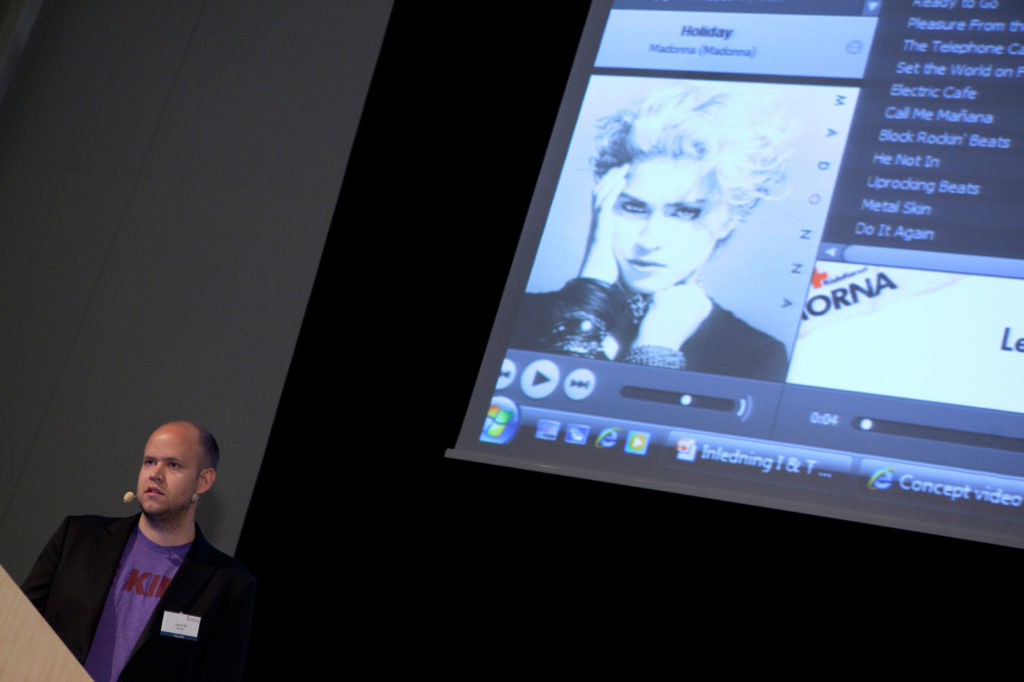 studio. The article’s focus is on Spotify CEO Daniel Ek‘s purchase of Locker Room last year from a company called Betty Labs. As The Vulture’s headline blared, “Spotify has its Clubhouse now.”
studio. The article’s focus is on Spotify CEO Daniel Ek‘s purchase of Locker Room last year from a company called Betty Labs. As The Vulture’s headline blared, “Spotify has its Clubhouse now.”
While Spotify’s playlists and podcasts are all on-demand, Byers points out that Locker Room provides the company with an opportunity to evolve into “an enhanced live audio experience for a wider range of creators and fans.”
As Byers explains, Ek is desirous of leveraging Spotify’s stable of proprietary podcasters, like Joe Rogan, Bill Simmons, Michele Obama s well as Prince Harry and Duchess Megan in the live space. The Locker Room app gives these celebrity podcasters the ability to “now broadcast in real time, rather than on delay, while musicians might one day be able to broadcast their concerts or other recording live to listeners.”
Seriously?
Seriously.
Who knew that transforming recorded music and taped interviews into live, in the moment content could be so attractive?
Isn’t that called “radio?”
Yes, that live audio experience has been presented with no subscription fees on the AM and later the FM band for a century now.
And so there’s the question: Does radio have a branding problem? Or does it have a content problem?
 Does the word “radio” symbolize an antiquated entertainment form? Or is the problem the predictable, tired, and generic product that constitutes “good enough” and “the best we can do” in order to achieve a higher degree of economy and efficiency?
Does the word “radio” symbolize an antiquated entertainment form? Or is the problem the predictable, tired, and generic product that constitutes “good enough” and “the best we can do” in order to achieve a higher degree of economy and efficiency?
And now, deregulation will be touted as the necessary support mechanism to keep radio broadcasters competitive. But will the ability to now own more stations in markets big and small be the magical elixir that broadcasters are longing for? Will it be radio’s salvation or just another tourniquet for an industry that is falling further behind in the audio race?
The answer is not about owning most or all stations in a market, but instead, providing a valuable, desirable experience no one else can offer. Rather than trying to jump into the hot audio category of the year, shouldn’t radio broadcasters be looking within themselves to produce a better live and local version of what now constitutes radio in 2021?
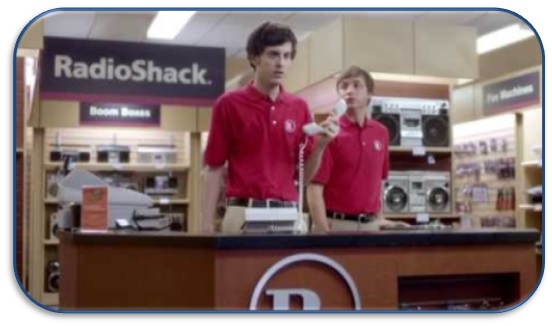 Radio might learn by the misguided example set by Radio Shack. Founded way back in 1921, the retailer dropped the “R-word” in 2009 to become The Shack in the hope it would contemporize and freshen up their image.
Radio might learn by the misguided example set by Radio Shack. Founded way back in 1921, the retailer dropped the “R-word” in 2009 to become The Shack in the hope it would contemporize and freshen up their image.
But the problem wasn’t the name – it was their product. Cluttered, crowded fluorescently lit spaces that had all the charm of hardware stores, mostly staffed by indifferent clerks going through the motions was part of the problem. In a world of BestBuy and Apple Stores, those weird Radio Shack locations seemed out of sync with the 2000s.
Was the old brand name dated? Without a doubt. But the stores themselves and the lack of a modern retail strategy were the culprits that sunk these once-successful electronics marketplaces into bankruptcy.
Maybe there’s a lesson there. You have to evolve your business plan and question your assumptions because things often change when technology is involved. What worked in the 1980s is not guaranteed to be successful today.
Should radio broadcasters be rushing into these hot new audio spaces to scarf up the promise of quick and easy profit? Or should companies of all shapes and sizes be thinking about how to do great radio, providing content and service for a changing marketplace that now demands digital tools for expanding programming, marketing, and sales.
Even with all the audio in our midst, radio broadcasters could own the most precious piece of turf there is – radio.
Despite the neglect, the belt-tightening, and the furniture burning, broadcast radio has an enviable technical foundation. And it is still the most listened to of all audio platforms.
But in order to compete in this expanding audio arena, broadcasters must realign their strategic goals, the products and experiences they deliver, and the way radio is sold and marketed if the medium is to remain viable.
the way radio is sold and marketed if the medium is to remain viable.
The bar’s been raised. What is it that radio can own? What matters to consumers in 2021 as they seek out audio information and entertainment, whether they elect to pay for it or not?
A story in Bloomberg by Lucas Shaw – “A Radio Giant Renames Itself To Chase Podcast Listeners” – tracks the Entercom-Audacy name change, chronicling advertiser shifts away from radio and toward on-demand content.
And then Shaw makes this observation:
“Radio is one of the most popular and least understood media in America.”
Sadly, it is misunderstood by some of the people who have worked in the business for decades.
The great news is that audio is not only on everyone’s radar screen – it is becoming the center of attention during a period where it’s been all about video streaming.
But as we’ve learned from Apple, Spotify, Amazon, Google, SiriusXM, and so many others, the battle for ears is intensifying. Radio executives must feel like they’re being lapped on a track they built.
And it’s a race radio broadcasters cannot afford to lose.
Thanks to WNSP’s Dave Schultz.
- How Will Radio Fare In The Battle For The Fourth Screen? - April 3, 2025
- Like A Pair Of Old Jeans - April 2, 2025
- What’s Fair Is Fair - April 1, 2025




Reminds me of the oft heard phrase, “it worked so well, we stopped doing it.”
RADIO, like all great creative endeavors, takes time, attention and focus to be done well.
You nailed it, Dick. Thanks.
With the rise in interest in audio I suggest radio broadcasters have an untapped market in potential live streaming listeners who have tried it and been driven away by the following:
– Uneven volume
– Mystery silences of several seconds to several minutes each
– Mistimed replacement content during commercial breaks
– Repeated prelude content of 30-60 seconds every time a streaming app is opened, even if it was closed a few minutes ago
– Amazon devices hearing and responding to the word “Alexa” when stations advertise Alexa access
– Local sports blackouts on streaming but not on air
– Online replacement ads in a language other than that of the main content
– Odd audio processing and time compression artifacts
– Lack of local response to technical complaints — “Sorry, our live streaming is handled centrally by corporate.”
It may not be a technical issue, Steve, but I would add the lack of prep to your list. Thanks for this thoughtful response.
It has been interesting how for decades, corporate leaders blamed the words. Yet we still “roll tape,” on the Colbert show, artists have new “albums” and “records” (nomenclature that dates back to the time of the 78 RPM).
Now that we need live or live-like audio, we have squeezed out our capacity to do it. We have fewer experienced editors, the licensing issues for music are becoming more onerous than ever (unless you hand the keys over to YouTube or an aggregator). It takes time, preparation and experience to be compelling.
Whatever the glory decade of radio you look to, there have been constraints of signals, technology, regulation and licensing. Ironically, one of the constraints that the NPR realm worked through was being non-commercial. Podcasting and alternative distribution seems to have lifted that restriction, as many “public” podcasts are now running commercials that would never be allowed on non-comm radio. Meanwhile, a number of NPR stars are leaving to greener, commercial pastures (as many of my friends did back in the 80’s, when NBC and ABC were putting more of their resources into journalism, and “audio” – NBC was even going stereo!)
Things change. Incumbency is no guarantee of longevity – and the one thing our listeners have the most scarcity of is time. Those of us who create need to take more time be worth the time we hope our listeners will invest in what we make.
Oh, Scott, your last paragraph! A lot to unpack there, but now that scarcity is no longer a radio asset, it takes serving an audience with rich experiences to a whole new place – IF we’re willing to go there.
Always good stuff, Fred. There were several operative phrases in your blog that resonated with me, but this one struck me as particularly poignant: “But in order to compete in this expanding audio arena, broadcasters must realign their strategic goals, the products and experiences they deliver, and the way radio is sold and marketed if the medium is to remain viable.”
Sure, we can realign strategies, products and experiences. As we should. But the elephant in the room is an audience measurement system that has stymied our growth and innovation. For decades broadcast radio has been handcuffed by an archaic process for buying and selling that makes it precarious for us to take the calculated (and un-calculated) risks in order to protect the incredible margins that make our industry so compelling.
If we were launching an audio business today designed to entertain, inform and serve our communities with live and local personalities would we accept a concept of audience measurement based on 15 minute segments where at least five minutes must be recorded for that 15 minutes to count as currency? We all know the answer. What are willing to do about it?
Thanks for keeping us thinking!
DG
Dennis, thanks for the thoughtful response – glad it resonated for you. It’s an age-old problem for radio and we’ve all been victimized by it: programming TO the ratings rather than to the audience. Sometimes, it all aligns, but at other points, it reinforces lowest-common denominator programming. Somehow, I think many of us might have enjoyed creating content in an ecosystem measured by subscription, rather than by AQH.
Great article! We launched podcasting to the radio world in 2005. They looked at us like we were martions, even though NPR was starting to kill it. We picked a sector(comedy) and handheldcomedy.com was born with some top comics in LA and NY. Dane Cook did our innaugural show but in 2005 VC’s could not see a commercial horizon that would take 10 years to develop. I do think the very idea of a podcast was the think bubble that pointed another way for audio.
I like the way you put that – it is a think bubble for audio, expanding the tent. Thanks, Jimmy.
Great read, Fred! And I agree that “content” that connects with a station’s listeners/market is the space we in radio can still own, however to pull that off effectively, takes local air talent. That takes quite a bit of revenue. I can only speak for myself, but each year that become a harder nut to crack as more and more “Mom and Pop” advertisers are closing their doors. The economy in my backyard market of 27,000 has been stagnant for a good decade now. I believe in “live and local”, but I no longer can afford it. So I voicetrack. I’m not sure what the answer is for us “ultra small market” folks. If my local economy is not growing, how can my payroll?
Michael, it’s a rock/hard place situation – no doubt about it. I don’t know Franklin, VA so there’s nothing specific I can offer up. Maybe there’s a way to partner with some of these “stagnant” businesses for free sampling opportunities, especially as COVID dissipates. I feel your pain – you have to save money somewhere, but it’s hard when you have to homogenize the air sound. Keep in touch and good luck.
Devices I: I grew up in a household where Mom enjoyed a radio in the kitchen, Dad listened to radio in his home office, parents had a radio in their bathroom and we had a console receiver in the living room. Now try buying a radio today. The standalone home radio receiver market was the receiver industry’s to lose – and it did.
Devices II: My Motorola wireless phone contains a FM receiver chip and very handy app for using it. But “moto” is a minority brand compared to Apple which insists it can’t include FM in its phones (really because users might listen to radio instead of its own audio services). There must be room to innovate here if stations and receiver makers can get together. Consider The Public Radio, a receiver made in US and sold by public stations.
LPFM: There are more than 2000 non-com LPFM stations on the air in the U.S. A substantial subset of these are genuine community stations, airing music and stimulating content nowhere on the commercial dial. Community LPFM is so refreshing and tuned in to locality, while commercial radio is increasingly formulaic and removed from local issues.
NextGen: The horseman on the horizon is ATSC 3.0 or “NextGen” TV, which has the potential to overpower — figuratively and maybe literally — the extant radio technical infrastructure with new wireless audio services on a TV stream. NextGen may well erase the distinctions between TV and radio.
Hey Buzz, I enjoyed the comment.
Radio has been spectacularly unsuccessful at convincing ANYONE to include an FM chip into their devices, be they cell phone companies or smart speakers. And a friend recently sent me a story about how the city of Santa Rosa is giving away free radios to their residents in anticipation of upcoming wildfire season. They include the weather band, but NOT AM or FM.
Regarding ATSC 3.0, we got a nice tour of the technology at CES a couple years ago, and it’s truly amazing how it might revolutionize TV. Thanks for the comment.
Changing names to fit and conform and sink into the crowd when the differentiation of Radio is the word RADIO. You guys invented audio and up to now it’s just been a word in a conversation of engineers and now it’s a branding word front and center. The battle is Attention Economics and whatever the trend is for that space at the moment but in my opinion look to those golden ages of radio and and bring it to the now. Maybe you’re not the elephant in the room but you are still an elephant and you still have an incredible power. Metrics have gotten you to this juncture because it tightened the bolts too much. This is where metrics goes wrong.
Coming from a musical perspective and isolating it to just the drums in a song. There was a point when electronic drums and a thing called MIDI took over. This is where the computer tells the instruments what to do. So if I hit record, it would record as I was playing the drums on my keyboard in all my humanity, mistakes and all. No worries, I had in my software Quantization and it fixes everything perfectly. However at 100%, it sounded like a machine so I would back it off to about 75 to 80% and that would keep the feel. Then the 90’s came and real drums became king again.
Point being, what is pure RADIO? Maybe take a hard look there.
Audio and everything attached has encroached on Radio with using your own playbook not only disrupting it but taking away your mojo. Data Science to create Playlist, LIVE with Pocasts. Obviously, content is not the problem, take a look at the science of Attention Economics, take a look at hierarchy of taste and social stratification for good measure. Labels and the Spotify’s of the world have gone granular using data science in a different way to capture audience while radio is still debating what is Audio. If you figure out how they are using the data, you can compete much better and stay in the race. To them it’s not just the data, it’s how are you reading and using the data.
C’mon Radio, reacquire your leadership.
Billy, this is an important comment I hope radio people make the time and effort to read – and let marinate.
It is fascinating how AUDIO has flummoxed radio, to a point where companies drop the r-word and shift their branding focus to audio. As you suggest, it runs deeper than that.
And you’re right. Radio invented using research to provide data, especially on the music. We stuck 100 people in a Marriott conference room, gave them Scantron sheets and #2 pencils and bombarded them with 700 hooks. The result? We have a popularity, familiarity, and burned out yardsticks – and little else.
It’s a long road back, but radio still has assets that even a name change can’t screw up. There are more people listening, radio is local (hopefully), it has personality (again, hopefully), and the ability make connections other media cannot duplicate. Those are a lot of tools, but we’ve got to rethink how we use them.
Thanks for these important reminders, BIlly.